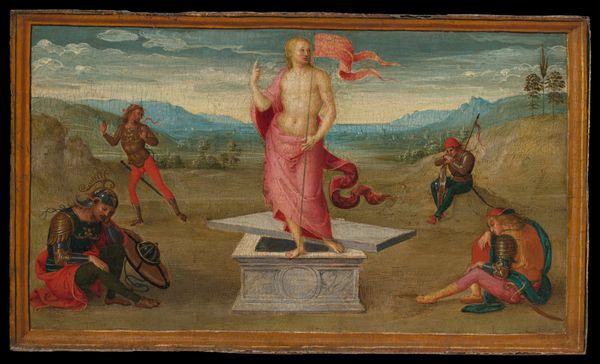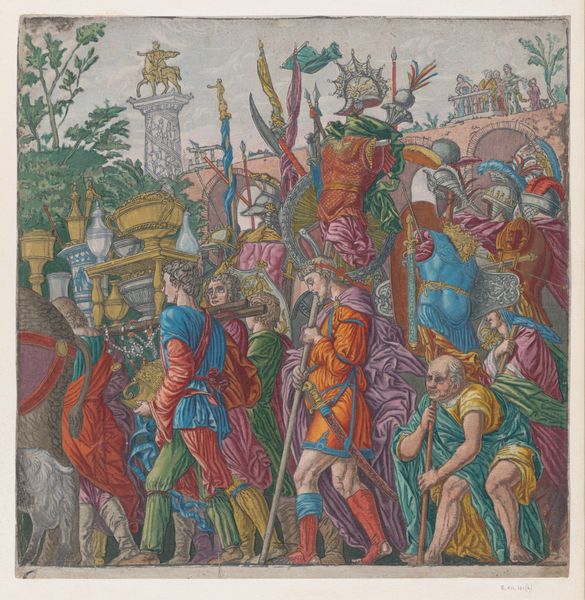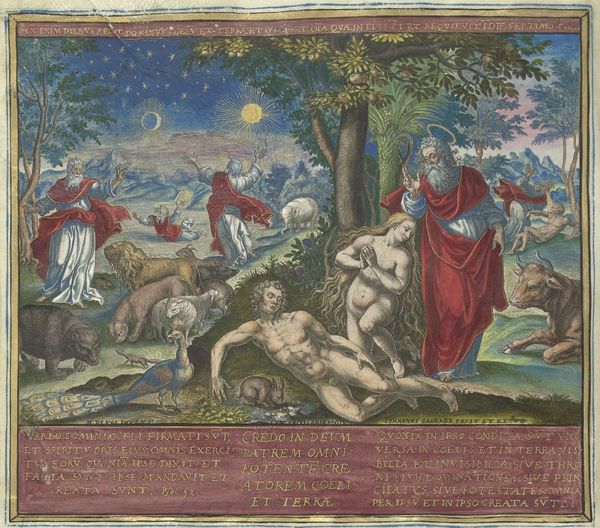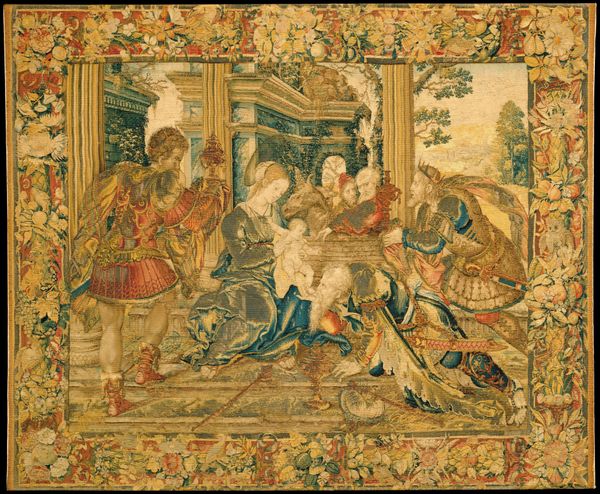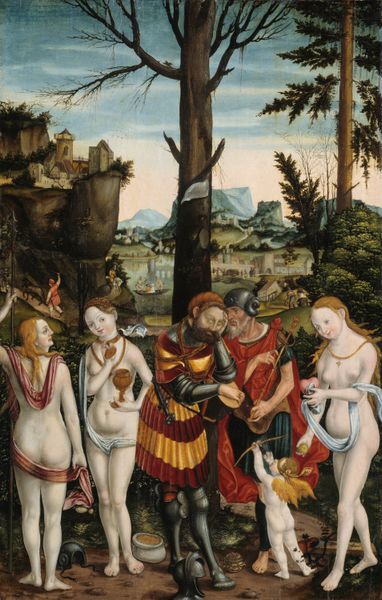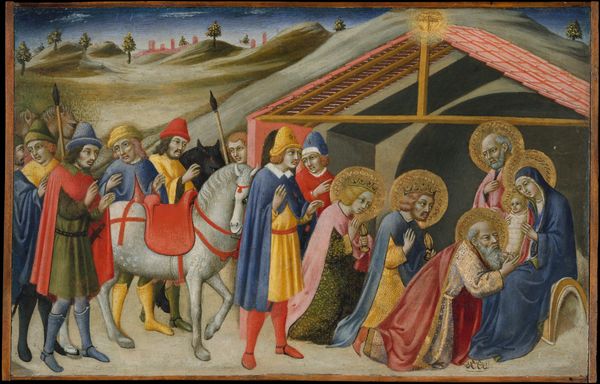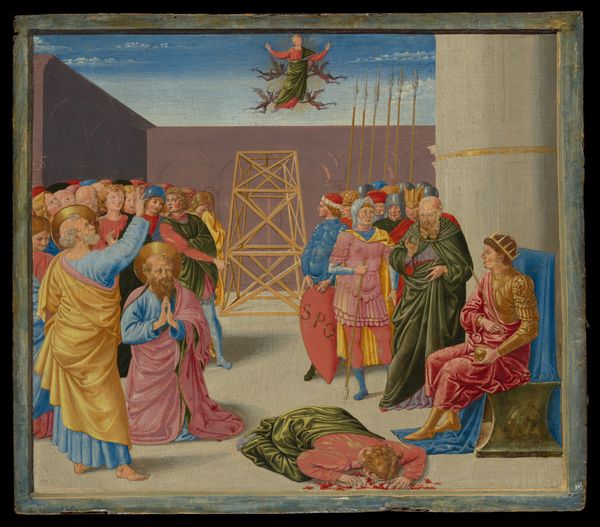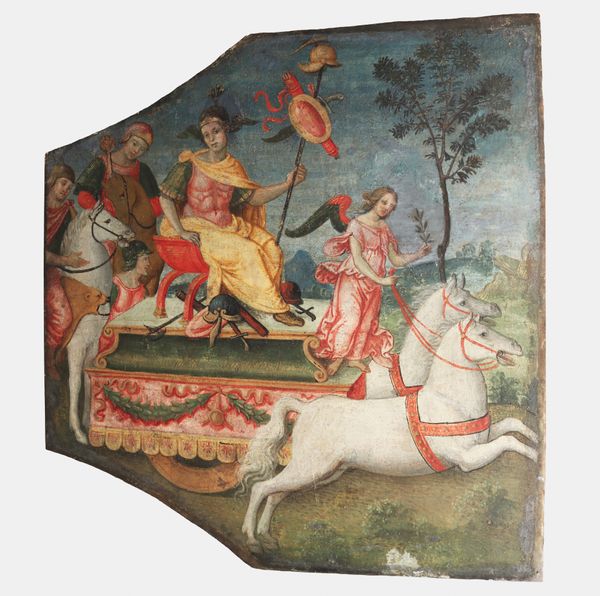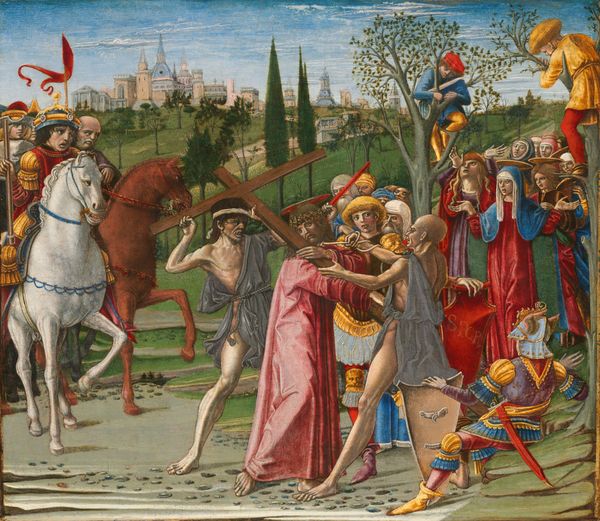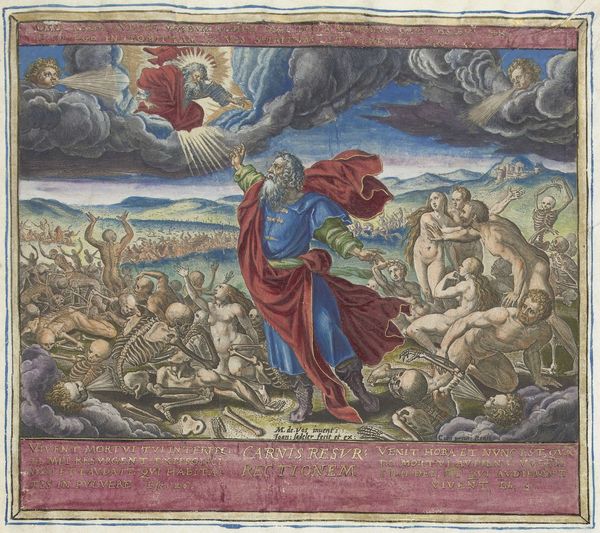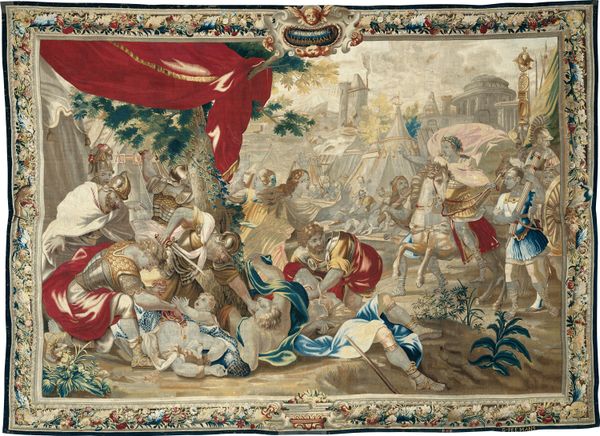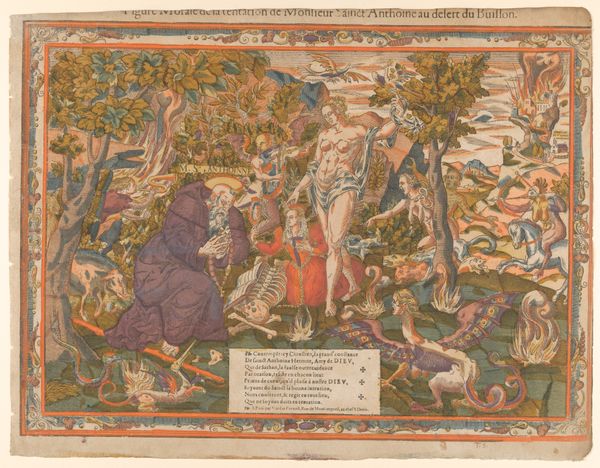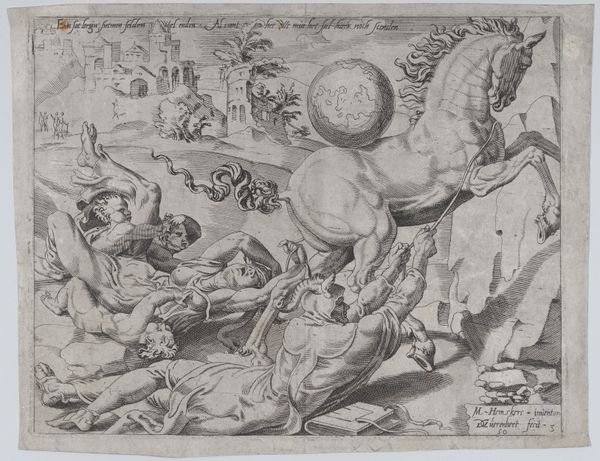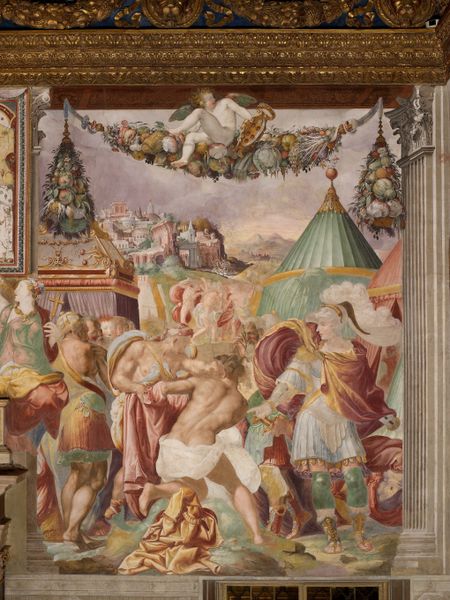
oil-paint
#
oil-paint
#
landscape
#
figuration
#
oil painting
#
soldier
#
horse
#
men
#
history-painting
#
italian-renaissance
#
angel
Dimensions: 15 5/8 x 18 in. (39.7 x 45.7 cm)
Copyright: Public Domain
Curator: Here we have Benozzo Gozzoli’s “The Conversion of Saint Paul,” likely completed sometime between 1440 and 1497. The medium is oil paint, offering a glimpse into this pivotal moment in Christian history. Editor: The first thing that strikes me is the drama, yet it’s somehow…contained? Like a stage play frozen mid-act. The fallen figure of Paul creates this really interesting focal point, but all these surrounding figures frozen in flight really capture my eye too. Curator: Absolutely. Gozzoli’s decision to portray the scene as a bustling landscape, rather than solely focusing on Paul's divine encounter, situates the event within the larger socio-political sphere of the time. These aren't just anonymous figures; they are active participants in a world that's about to be disrupted by a radical shift in belief. Consider, too, the almost theatrical costumes; they speak volumes about the patronage systems in place and who had the power to commission such elaborate depictions. Editor: Right, and isn’t it interesting that instead of painting some awe-struck vision of divine light, Gozzoli offers more human elements? The panic on the soldier’s faces as some hold up shields for protection... It feels relatable, even now. In essence, you’re drawn to ask yourself where do you belong in this scene of change and transformation? It reminds me of Walter Benjamin's “Theses on the Philosophy of History" and how history impacts every part of life as something like this conversion comes to pass. Curator: Exactly. The anxiety and urgency conveyed by the painting reflects not just a religious awakening, but a potential power shift—raising questions about faith, authority, and societal order in a pre-modern context. This also resonates strongly with feminist critiques of historical narratives where individual experience are centered to create change and it questions whose voice is lost amongst dominant narrative Editor: Yes, so from our viewpoint in the present day, one can appreciate how this religious scene continues to engage crucial debates surrounding power and privilege throughout time. This piece showcases that dynamic, even when appearing initially as merely another Biblical artwork. Curator: Well said! Thinking about how institutions have shaped these types of religious paintings helps see how the powerful maintain the art of cultural hegemony! Thank you for your insights, it's a really interesting intersection! Editor: And thank you, it helped draw me more into this world in turmoil on the precipice of enormous cultural and religious change.
Comments
No comments
Be the first to comment and join the conversation on the ultimate creative platform.
